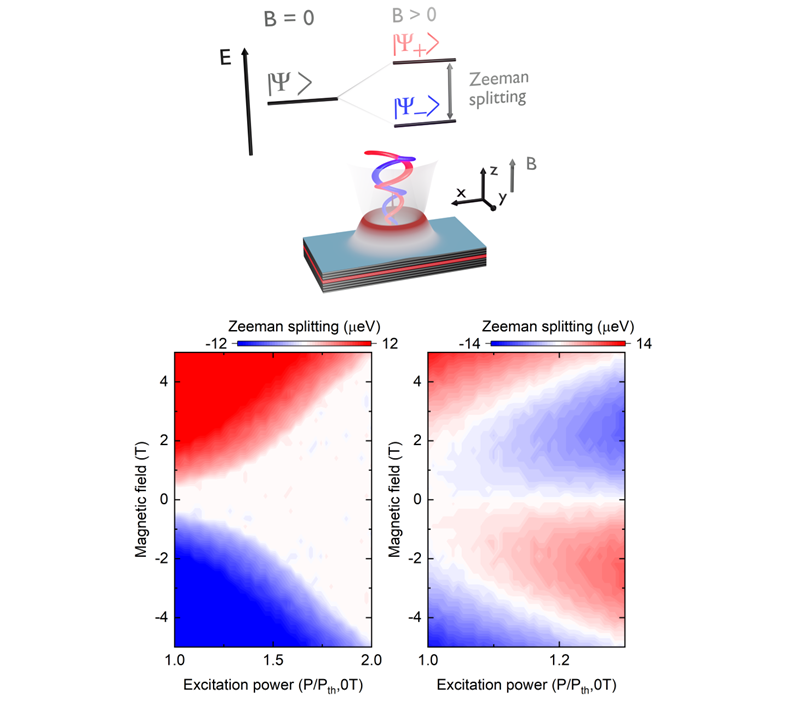We are pleased to announce that Physical Review B has just published our new work entitled "Occupancy-driven Zeeman suppression and inversion in trapped po lariton condensates". The article is highlighted as an Editors' Suggestion and is open access.
 Extremely high coherence time and, thus, ultranarrow spectral linewidths make it possible to resolve magnetically induced μeV fine-energy shifts in trapped exciton-polariton condensates. The continuous control over the polariton confinement enable the authors here to explore two operation regimes: (1) the full parametric screening of the Zeeman splitting and (2) the Zeeman inversion regime. The transition from one range to the other occurs by adjusting the size of the optical trap, which controls the strength of the polariton-polariton and polariton-exciton reservoir interactions.
Extremely high coherence time and, thus, ultranarrow spectral linewidths make it possible to resolve magnetically induced μeV fine-energy shifts in trapped exciton-polariton condensates. The continuous control over the polariton confinement enable the authors here to explore two operation regimes: (1) the full parametric screening of the Zeeman splitting and (2) the Zeeman inversion regime. The transition from one range to the other occurs by adjusting the size of the optical trap, which controls the strength of the polariton-polariton and polariton-exciton reservoir interactions.
About me

I am a Postdoctoral Research Associate at Durham University. My research concerns the intersection of condensed matter physics and nonlinear photonics, with the main attention focused on topics related to studies of condensation of polaritons, polariton lasing in coupled microcavities and dynamics of exciton-polaritons. I am also interested in nonlinear effects in novel polariton systems, such as microcavities with 2D materials or perovskites. My goal is to explore light-matter interactions and look for new effects related to microcavity exciton-polaritons.